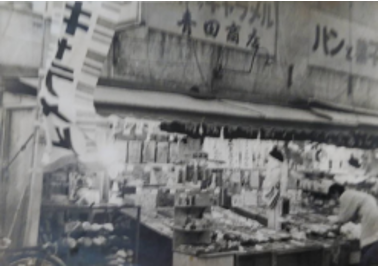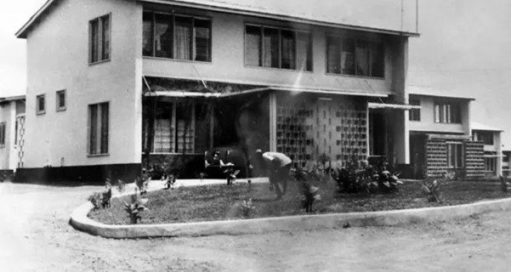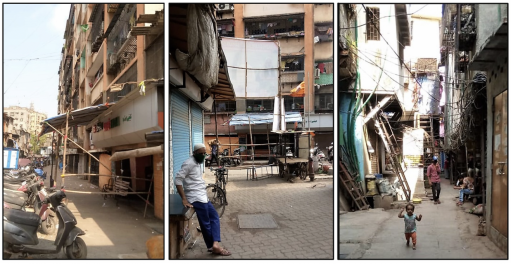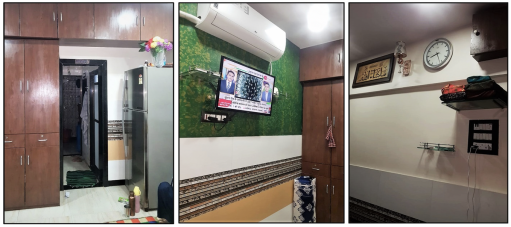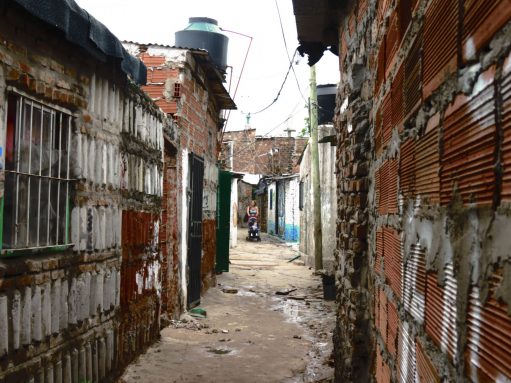Old Anarkali Housing Story
By Asim Noon, on 11 July 2023
This housing story follows the urban transformation of a once-thriving node based in the Old Anarkali neighbourhood of Lahore, Pakistan. It is a story of cultural shift, resistance to change, inevitable transition, and the lingering battle between despair and hope. The story follows a narrative thread, informed by inherited memories and from lived experiences in what used to be a tightly-knit neighbourhood community. The story depicts the loss of shared space and collective consciousness due to repeated experiments of urban (de)generation.
While this housing story focuses on the specific neighbourhood of Old Anarkali, Lahore, it is framed by the lived experiences of one of my dearest friends from college, who has requested that his name remain anonymous. As the protagonist of this housing story, he resided at 3/2 Lodge Road for the larger part of his adolescent life. We studied together at the nearby National College of Arts Lahore Campus and would often get together at his house after college.

My friend as a child with his mother in the living room of their Old Anarkali home
Introduction
Pakistan is a South Asian developing country with over 240 million residents and has been doubling in population density every 35 years (World Population Dashboard – Pakistan). According to a recent UN Report, Pakistan is one of the eight countries that will witness more than half of the projected increase in global population by 2050 (World Population Prospects, 2022). Country wide, it has historically battled housing issues. Even at a micro level with its urbanising cities, it has witnessed housing crises that have seen huge shifts in communities and how they live.
As the capital of one of Pakistan’s most populous provinces, the Punjab, Lahore is no exception. Its residents struggle with socio-political power relations that underpin the housing market. Infrastructure facilities and quality-of-life improving investments are inevitably concentrated in areas of influence, where wealthy residents pull resource division and maintenance, directing access away from the urban poor. This rich-poor divide leads to a “splintering urbanism” (DPU 2013, originally by Graham & Marvin, 2001). Additionally, whilst infrastructure like rapid transport may improve mobility, it comes at a high cost. It can displace entire communities, where ‘bastis’ and ‘abaadis’ (shanties) fall prey to repeating false promises of development.
The context

Old street scene of Anarkali Bazaar, Lahore, 1890s
By British Library (Author Unknown) – British Library, Public Domain, https://commons.wikimedia.org/w/index.php?curid=11397569
As one enters the (new) Anarkali food street, there is a sense of being transported to a different time. This pedestrian-centred traffic artery boasts flavourful food and a sensory delight, especially on festive occasions like Eid. However, as one traverses the aptly titled “tourist street” and walks south, a harsher reality unfolds. The Old Anarkali road is chaotic with traffic, overflowing with motorcycles, rickshaws, and cars and being overtaken by rampant commercialisation.
“Purana” Anarkali or Old Anarkali is a neighbourhood at the south end of Anarkali Bazaar (market), one of the oldest surviving markets in the Indian Subcontinent. It dates back more than 200 years. Anārkalī was a courtesan in the Mughal era, with whom Prince Salim, who later became Emperor Humayun, fell in love. Steeped in Mughal architecture and romance, the mausoleum and the area surrounding it existed as a cultural and artistic centre. The story of Anārkalī itself is one of unrequited love and longing.
Timeline
Around World War 1
The Old Anarkali area consisted primarily of horse stables, to facilitate the cavalry, which were later relocated to a place called Rasala Bazaar
1929
The house, 3/2 Lodge road, was constructed, as per the blueprints, in the celebrated Indo Sarsenic style

1947
The protagonists maternal grandparents moved to this house from India after his grandfather fought in World War 2 and was granted legal tenure for being a part of the pre-partition INA – Indian National Army
“There was community spirit and people were considerate, to the point that even families of four decided to share space with each other. My nana (grandfather) gave space to another family on the ground floor.”
During partition – and post 1947
In the splitting of the Indian subcontinent into Pakistan and India- many families were divided. People had to abandon their homes and rushed to relocate. Some buried expensive belongings in hopes that they’d revisit their homes and reclaim their treasures, but that never happened. There are stories that gold and precious metals were found in some abandoned homes.
The neighbourhood, in its physical state, stayed the same for a large part of 1947 up until the 1990‘s, when the protagonist was born. Neighbourly evening walks were common amongst communities and there was strong social integration.
In early 2000’s
By the early 2000’s, the neighbourhood was running on its last fumes, especially as real physical transformations in the form of construction for the contested Orange Line mass-transit system started taking shape. It corroded what little was left of a past sense of community.
Context mapping

Areas of interest are marked on the Google Earth image (above);
In red is the house 3/2 Lodge Road;
In blue is the Jain Mandir Temple which stands isolated around a traffic island since the unpopularity of Jainsim in an Islamic post-partition republic;
in green is the Orange Line metro station completed in 2020; in purple is pre partition structure Kapoor Thala house.
The area inside the yellow dotted line marks the residential area that was completely destroyed to make room for the viciously contested Orange Line Anarkali Metro station.

Protagonist’s mother in her college days in the alleyway outside their home (1978)
3/2 Lodge Road was right in front of Lahore’s former mayor’s residence, which later became, and is still is, the office for a law firm Kashif Law Chambers. This shows truly what a thriving community once existed in the area. Owing to the fact that the high court was close by on Mall Road, more law firms began surfacing in the area.
Circumstance and proximity play an interesting role in shaping life choices. My friend was inspired by both his parents towards the arts since they were designers by degree and profession. He thus chose to attend the same institution as his mother.
My mother would often walk me through the old streets of Rabbani road and Rasala Bazar all the way up to the National College of Arts, her alma mater. She would get fresh clay from the ceramic studio for me to play with. We would stop by the museum quite often. I think just walking through the streets that were populated with such great colonial, pre-partition architecture, sparked and encouraged my sense and fascination for it.
Reasons for leaving
In his own words the factors for leaving Old Anarkali were perhaps many.
For me personally, there was a decline in the quality of life there. There was so much noise pollution. The doctor advised that we move out because it was depressing for Ammi [mother] to be there. It may ring true for a lot of people, when you’ve seen too much in a house you really want to eventually change scenery and get away from it.
Our house shared the wall with a laboratory for the longest time. The machine was placed directly next to the wall that connected with our side of the house, constantly exposing us to x-rays. They were taken to court a few times but nothing became of it. This was also part of why we decided to leave home.
In addition to this, the house was also gradually coming apart structurally – instead of renovating it, it was more practical to shift. Due to commercialisation, CNC (computerised numerical control) and laser cutting services had taken over and posed serious health concerns. In 2006, the roof of a room we did not use came down too. So it was all just in shambles.
Since a lot of the houses were built pre partition and used wood materials in construction, there was a serious termite infestation issue. It wasn’t the sole reason why one would be stressed, but it definitely contributed to the overall situation. In modern construction or areas where houses were built with new methods and procedures, treatments for termites are infused in the foundation of the structure. When you compare those construction methods to the methods of the past, you do get colder rooms in summers due to the construction quality, but then there’s issues like termites and seepage in the walls that need constant maintenance.
In a broader sense, I think for most people there, the community I’d say was 40 percent well educated. The neighbours whom we were most close to, a doctor, passed away, and his family moved out. The neighbourhood began to lose its meaning in time and space. The structures, walls, alleys and corridors don’t make a neighbourhood. It’s the people that occupy it. So I’d say, for most people, time just moved on, and in saying that, they had that move out and on too. But over time, shops and houses turned into spaces to host shoe workshops and metal sign workshops. This meant a lot of noise and the loss of peace and quiet which the area had seen a lot of earlier. Additionally, the areas in close proximity to newly refurbished Anarkali Bazar and commercialised Food Street also began to witness a lot more movement all around. It just did not make sense to stay there for a longer time.
What next?
My brother lives in and manages the upper floor of the old anarkali house. He has a love-hate relationship with the place. Squatters are common in those areas and people occupy spaces illegally. So, until the house is sold, my brother feels it’s unsafe to abandon it as it’s very likely someone will take over it illegally.

Interior photos of the house prior to being vacated

“If these bricks could talk, what would they say?”
Superimposing the past with the present
Broader implications
Lahore’s Orange Line metro seems to be the elephant in the room. The project was a venture part of CPEC (China Pak Economic Corridor). It was a one-of-a-kind Chinese-backed commuter train line, constructed over five years, from October 2015 till October 2020. It signalled a new chapter in the Pakistan-China friendship and provided an easier, faster commute for the citizens of Lahore.
However, the project was surrounded with controversy. In 2016, construction was temporarily suspended by the Lahore Court because it threatened UNESCO world heritage sites. Unfortunately, the verdict was later overturned by the Supreme Court of Pakistan. (Ebrahim, 2020)
Mr Kamil Khan Mumtaz, an renowned Lahore based architect, strongly advocated against the Orange Line project for its destructive methodology. He said that buildings and sites that “make Lahore what it is with its history, its heritage, its culture” were blasted into nothing. “Entire neighbourhoods, like the Old Anarkali where people lived and had worked for generations, look like Nagasaki,” he added, pointing to the blatant “violation of historic monuments” which he described as a “criminal act”. (Ebrahim, 2020)
Kamil Khan Mumtaz expressed concern regarding how “a cash-strapped country like ours would pay for this luxury”. He estimated that the Punjab government will pay “PKR 74 million per day (USD 460,800) in subsidies”. He suggested selling the train line to a private operator and buying buses instead, because, “Lahore has a good road network for the buses to ply on”.
3/2 Lodge Road was not scheduled for demolition, but a significant part of the neighbourhood on the east was destroyed. Over 200 families were displaced, as well as an institute for disadvantaged children, shops and a squatter settlement. (Ebrahim, 2020)
Affectees were compensated with what the government termed a historic package at the time. According to the Lahore Development Authority (LDA), people were compensated a lump sum of PKR 1 million (less than £3000) per room after being displaced by the Orange Line but many residents were unhappy. Shakeel Ahmed, another resident of the Anarkali district, lost his home and accused local authorities of heavy handedness.
Outdated colonial-era land laws like the Land Acquisition Act of 1894 empower the government to snatch land for unjust compensation. The Lahore Development Authority (LDA) said that the Punjab government was authorised to take land, granting the government the right to appropriate land if citizens receive compensation and prior notice.
This means that many of the former occupants have sacrificed property in one of Lahore’s most iconic and valuable areas. Property prices have skyrocketed in recent years but the displaced will not reap the rewards.
Conceding that Lahore needs a “smart, green transit system” like the Delhi metro, architect Imrana Tiwana deemed that the Orange Line remained an unacceptable alternative. Tiwana reinforced that it violates the law and is a complete misfit for a historic city with its Mughal-era “protected heritage”. She described it as “a huge white elephant” that will be used by very few. In fact, 1% of Lahore’s population (250,000 people) use the train – with the trains often operating considerably under full capacity. (Reuters, 2020)

View from 3/2 Lodge Road window (Anonymous, 2007)
Pre Metro Station (before)

The recently constructed Anarkali Orange line station is a tribute to Mughal era architecture
But it is important to consider the social and financial cost of all this. Is the intervention truly adding value to the community?
(By King Eliot – Own work, CC BY-SA 4.0) https://commons.wikimedia.org/w/index.php?curid=111939557

Old Anarkali context May 2001 (3/2 Lodge Road pinned in yellow)

Old Anarkali context May 2022 (3/2 Lodge Road pinned in yellow)
Conclusion
Pakistan’s housing problems are certainly manifold and complex. Such problems arise due to prioritising short-term goals against a long-term vision, especially when conceiving projects through external aid. Forming periodic consensus and employing a reframing diagnosis can open up the room for transformative potential in this regard. Thus, recognition of all stakeholders is a must to curb social injustices.
Rethinking, recontextualising and reconstructing mechanisms of housing is necessary to converge towards fair and just compensation to ensure that there isn’t a reproduction of what David Harvey calls the “accumulation by dispossession” (Harvey, 2008). Today, the term Purana Anarkali (old Anarkali) evokes a nostalgic sigh for a bygone era.
Although many have shifted away, all cannot be lost. Governments must see the need as well as the possibility to accommodate citizens without displacing them, as well as awarding fair compensation. Organisations like the Walled City of Lahore Authority strongly advocate and achieve results for the restoration and preservation of historic sites. There remains hope that collective action can spur recognition, bringing back to life the community spirit of places like old Anarkali.
The underlying truth is that neighbourhoods like Old Anarkali are co-produced organic urban centres and reminders of history. Their preservation and the just compensation for residents are important to presence, territory, and historic context. Mass appropriation of space, and the copy-paste replication of global cities, like that in the case of the Ravi Riverfront Development serve no good. Proponents and opponents exist towards this hailed as “Pakstan’s answer to Dubai”. This provokes the question ‘Is this what is visioned for once thriving neighbourhoods like old Anarkali?’

A mock-up of the Ravi City. Photograph: Courtesy of Meinhardt group
References
Ebrahim, Z. (2020, December 15). Orange Line Metro Train: Another ‘huge white elephant’? The Third Pole. Retrieved April 24, 2023, from https://www.thethirdpole.net/en/pollution/pakistans-first-city-metro-another-huge-white-elephant-2/
Graham, S., & Marvin, S. (2001). Splintering Urbanism: Networked Infrastructures, Technological Mobilities and the Urban Condition. Routledge.
splintering urbanism | UCL The Bartlett Development Planning Unit. (2013, July 5). UCL Blogs. Retrieved April 24, 2023, from https://blogs.ucl.ac.uk/dpublog/tag/splintering-urbanism/
Harvey, D. (2008). The Right to the City [New Left Review].
Managing supply and demand: The key to getting ‘housing’ right in Pakistan. (2022, March 11). World Bank Blogs. Retrieved March 12, 2023, from https://blogs.worldbank.org/endpovertyinsouthasia/managing-supply-and-demand-key-getting-housing-right-pakistan
Rizwan, S., & Mirza, Z. (2022, February 3). Commercialisation in Walled City hampers conservation, trade – Newspaper – DAWN.COM. Dawn. Retrieved March 12, 2023, from https://www.dawn.com/news/1672926
Toppa, S. (2020, December 21). ‘This will make us poorer’: Pakistani metro brings uncertainty for displaced residents. Reuters. Retrieved April 24, 2023, from https://www.reuters.com/article/us-pakistan-lahore-metro-feature-idUSKBN28W039
World Population Dashboard -Pakistan. (n.d.). United Nations Population Fund. Retrieved April 24, 2023, from https://www.unfpa.org/data/world-population/PK
World Population Prospects. (2022). the United Nations. Retrieved April 24, 2023, from https://www.un.org/development/desa/pd/sites/www.un.org.development.desa.pd/files/wpp2022_summary_of_results.pdf
 Close
Close




